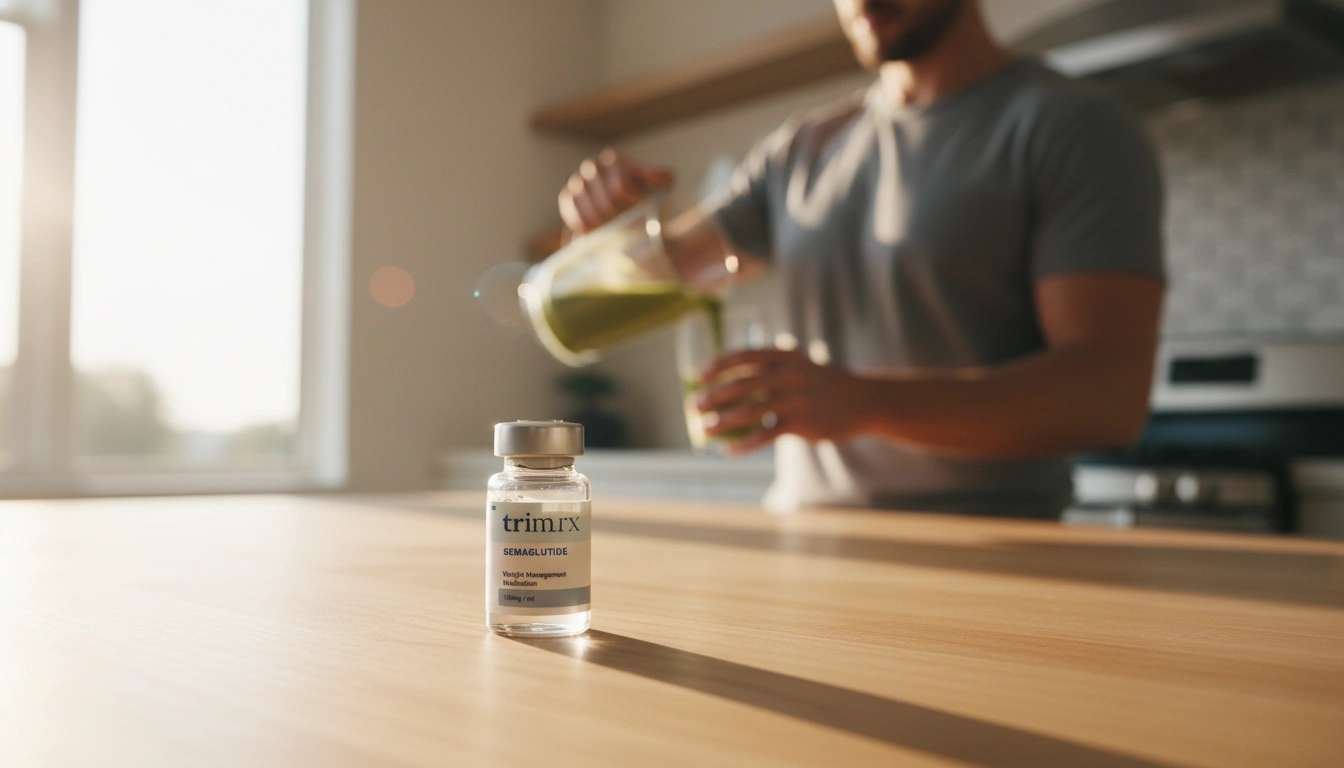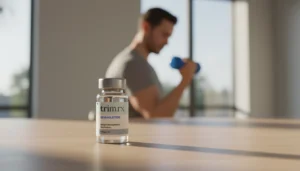Understanding Why I Bruised After My Semaglutide Injection

Introduction
Have you noticed some unexpected bruising after your semaglutide injection? You’re not alone. While bruising isn’t the most common side effect associated with semaglutide or its branded counterpart, Ozempic®, it is a concern for some individuals who self-administer these medications. Understanding the underlying causes of bruising can help us manage our expectations and improve our injection techniques.
The journey towards effective weight management often involves our understanding of how medications like semaglutide work, their administration methods, and how we can make our experience smoother and more effective. This post will delve into the reasons behind bruising from semaglutide injections, explore ways to minimize it, and empower you with knowledge to enhance your overall experience.
Our aim is to provide a comprehensive understanding of bruising post-injection, the factors that contribute to it, and actionable tips for preventing it. Together, we’ll explore the importance of proper injection techniques, the biological reasons for bruising, and when it might be necessary to consult a healthcare provider regarding these reactions.
Understanding Semaglutide and Its Administration
What is Semaglutide?
Semaglutide is a GLP-1 (glucagon-like peptide-1) receptor agonist, primarily prescribed for managing Type 2 diabetes and aiding in weight loss. Initially, it was approved by the FDA for blood glucose control, but it has since gained popularity as a weight loss aid due to its efficacy in promoting satiety and reducing appetite.
The medication is administered via subcutaneous injections, meaning it is injected into the fatty tissue just below the skin. This method allows for gradual absorption, which is crucial for its effectiveness. However, like any injection, it can lead to minor side effects, including bruising at the injection site.
The Mechanism of Injection
When we inject semaglutide, the needle penetrates the skin and subcutaneous fat. As the needle enters, it can disrupt small blood vessels, causing them to break and bleed into the surrounding tissue. This bleeding is what leads to bruising, which typically manifests as a discolored area on the skin.
While bruising is relatively uncommon, it can occur for several reasons, which we will explore in detail below.
Why Did I Bruise After My Semaglutide Injection?
1. Injection Technique
One of the primary reasons for bruising is the technique used during the injection.
- Needle Angle: Injecting at an improper angle can lead to complications. For instance, injecting at a 90-degree angle is ideal for subcutaneous injections. If the needle is inserted too deeply or at the wrong angle, it may penetrate blood vessels, causing bruising.
- Pressure During Injection: Applying too much pressure while injecting can also lead to bruising. It’s essential to use a gentle hand and allow the needle to enter the skin smoothly.
- Site Selection: Different areas of the body have varying densities of blood vessels. The abdomen, for example, is a common injection site that can sometimes lead to bruising due to its vascular nature. Rotating injection sites can help mitigate this risk.
2. Frequency of Injection
Repeatedly injecting into the same area can cause cumulative trauma to the skin and underlying tissues, increasing the likelihood of bruising. Our skin can develop localized inflammation or even scarring, which may lead to more pronounced bruising with subsequent injections.
3. Blood Vessel Sensitivity
Some individuals may have skin that is more sensitive to injections, leading to a higher likelihood of bruising. Factors such as age, skin thickness, and underlying vascular conditions can contribute to this sensitivity.
4. Use of Blood Thinners
Certain medications, including blood thinners, can increase the risk of bruising. If you’re taking anticoagulants or have a medical condition that affects blood clotting, you may be more prone to bruising from injections.
5. Injection Technique Training
It’s crucial to receive proper training on how to administer injections correctly. Learning from a healthcare professional can significantly reduce the risk of bruising.
How Can I Prevent Bruising After My Semaglutide Injection?
1. Rotate Injection Sites
To minimize trauma, we recommend rotating injection sites. Utilize different areas of the abdomen, thighs, or upper arms for each injection. This practice helps avoid repeatedly damaging the same blood vessels and skin tissue.
2. Use Correct Injection Technique
- Clean the Area: Always clean the injection site with an alcohol swab to reduce the risk of infection and inflammation.
- Pinch the Skin: Before injecting, pinch the skin to create a small fold. This technique helps ensure that the needle goes into the fatty tissue and not deeper into muscle or blood vessels.
- Inject at the Right Angle: Ensure the needle is inserted at a 90-degree angle for subcutaneous injections.
- Gentle Pressure: Inject smoothly without applying excessive pressure. After the injection, count to ten before removing the needle to allow the medication to disperse properly.
3. Apply Cold Compresses
After the injection, applying a cold compress can help constrict blood vessels and minimize bruising. This simple practice can also alleviate any discomfort associated with the injection.
4. Consider Your Medications
If you’re on blood thinners or other medications that may increase bruising risk, consult with your healthcare provider. They can provide tailored advice and may suggest alternative medications if needed.
5. Seek Professional Guidance
If bruising continues to be an issue despite following these strategies, consider discussing it with your healthcare provider. They can review your injection technique and provide additional tips or alternatives for administration.
When Should I Be Concerned About Bruising?
While bruising after an injection can be common, certain signs may indicate a need for medical attention. If you experience:
- Severe bruising that persists for a long time.
- Unexplained bruises appearing in areas other than the injection site.
- Signs of infection such as redness, warmth, swelling, or pus at the injection site.
- Severe pain or discomfort at the injection site.
It’s essential to contact your healthcare provider promptly. They can assess whether the bruising is a cause for concern and suggest the next steps.
Conclusion
Bruising after a semaglutide injection, while not uncommon, can be effectively managed with the right techniques and practices. Understanding why it occurs—whether due to injection technique, site selection, or other factors—empowers us to take control of our medication experience.
By implementing strategies such as rotating injection sites, using appropriate techniques, and consulting with healthcare professionals, we can greatly reduce the likelihood of bruising and enhance our overall satisfaction with the treatment. Remember, our journey towards effective weight management is collaborative, and we are here to support you every step of the way.
If you’re considering starting semaglutide or are looking for personalized weight loss solutions, we encourage you to take our free assessment quiz. This quiz will help determine your eligibility for our prescription weight loss medications, tailored to your unique needs. Together, let’s pave the way toward a healthier lifestyle.
FAQ
Is bruising after a semaglutide injection normal?
Yes, some bruising can occur after a semaglutide injection due to the nature of the injection process. However, it should be minimal and subside within a few days.
What can I do to minimize bruising?
To minimize bruising, ensure you are using proper injection techniques, rotating injection sites, applying cold compresses post-injection, and consulting with your healthcare provider if needed.
When should I seek medical advice for bruising?
Contact your healthcare provider if you notice severe bruising, unexplained bruising elsewhere, signs of infection, or if the bruising is accompanied by significant pain.
Can I take blood thinners while on semaglutide?
Discuss any medications, including blood thinners, with your healthcare provider. They can guide you on how to manage them while using semaglutide.
Are there alternatives to semaglutide injections?
Yes, alternatives such as oral medications and lifestyle changes can be explored. Consult your healthcare provider for personalized recommendations based on your health needs and goals.
By addressing these concerns and questions, we encourage you to take charge of your weight loss journey with confidence and clarity.

Transforming Lives, One Step at a Time
Keep reading
Decoding Semaglutide: How Long Does It Take to Get in Your System and Show Results?
Discover how long semaglutide takes to get in your system and show results. Understand its timeline, benefits, and how TrimRx supports your weight loss journey.
Optimizing Your Semaglutide Journey: What Time Should I Take Semaglutide for Best Results?
Optimize your semaglutide treatment! Learn the best time to take semaglutide, manage side effects, and maximize weight loss results with expert tips from TrimRx.
Demystifying Semaglutide Dosing: Understanding How Many mL to Take for Your Journey
Confused about semaglutide dosing? Learn how many mL to take for weight loss and type 2 diabetes. Get clear, expert guidance on units, milligrams, and titration schedules.



